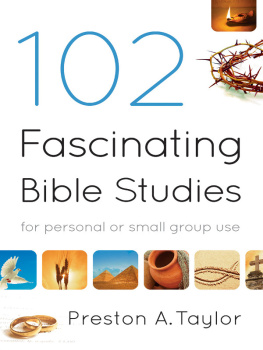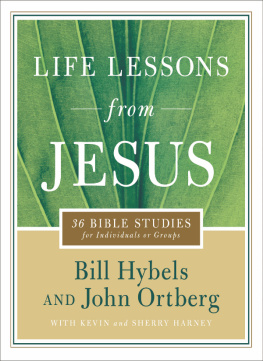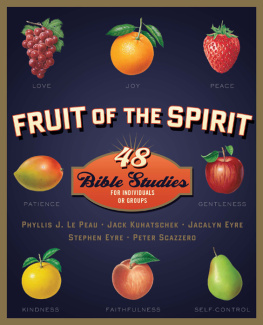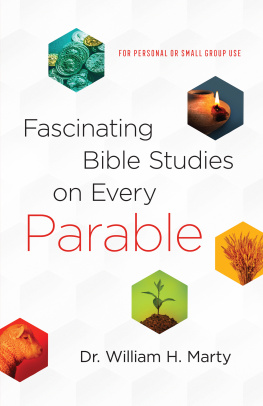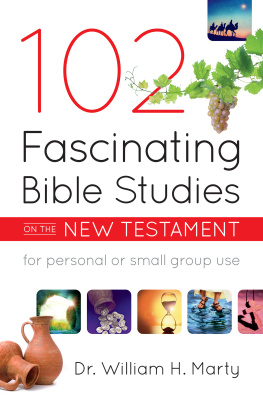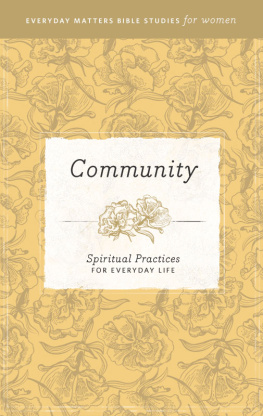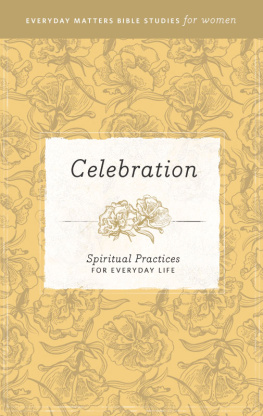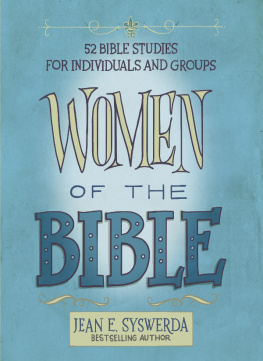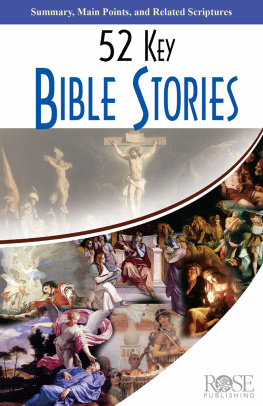Fascinating
Bible Studies

Fascinating
Bible Studies

Preston A. Taylor

102 Fascinating Bible Studies
Copyright 2010
Preston A. Taylor
Cover design by Lookout Design, Inc.
Unless otherwise identified, Scripture quotations are from the King James Version of the Bible.
Scripture quotations identified NIV are from the HOLY BIBLE, NEW INTERNATIONAL VERSION. Copyright 1973, 1978, 1984 by International Bible Society. Used by permission of Zondervan Publishing House. All rights reserved.
All rights reserved. No part of this publication may be reproduced, stored in a retrieval system, or transmitted in any form or by any meanselectronic, mechanical, photocopying, recording, or otherwisewithout the prior written permission of the publisher. The only exception is brief quotations in printed reviews.
Published by Bethany House Publishers
11400 Hampshire Avenue South
Bloomington, Minnesota 55438
Bethany House Publishers is a division of
Baker Publishing Group, Grand Rapids, Michigan.
Printed in the United States of America
Library of Congress Cataloging-in-Publication Data
Taylor, Preston A.
102 fascinating Bible studies : for personal or small group use / Preston A. Taylor.
p. cm.
Includes bibliographical references.
Summary: A retired pastor and missionary provides a collection of brief topical Bible studies for small groups or personal studyProvided by publisher.
ISBN 978-0-7642-0837-9 (pbk. : alk. paper) 1. BibleTextbooks. I. Title. II. ~Title: One hundred two fascinating Bible studies for personal or small group use.
BS605.3T39 2010
220.071dc22
2010014543

Dedicated to Preston Jr. and Marsha Kay
and
to the churches where I have had
the privilege of serving
and
to Gods eternal cause, worldwide.
Blessings to all,
PRESTON A. TAYLOR
BIBLE STUDY
TOPICS
Welcome to an exciting Bible adventure. The goal of 102 FascinatingBible Studies is to do three things: (1) get readers more interested in the Bible as they search the Scriptures on each topic; (2) provide a unique and unparalleled resource for devotional or group Bible studies; and (3) give everyone the opportunity to have refreshing fellowship with others.
If you are using this book with a small group, let me make a few suggestions. These are not hard and fast rules, but simply things I have learned over decades of leading Bible studies.
It would be best if each participant had a Bible and a copy of this book for study and sharing. The group leader should give each person time to locate every Scripture. No one should feel intimidated or embarrassed about not knowing where some books of the Bible are located. Genesis, Matthew, and Revelation may be easy to find, but most of us have a limited knowledge of the Bible, so help each other out and have fun locating the various books. Also, some may not remember how to spell or pronounce the names of some of the minor prophets or which book comes before another. The same difficulty arises with some New Testament books. Who doesnt have a rather quizzical look when a few Bible books are mentioned: Nahum, Habakkuk, Zechariah, Jude?
In following this topical study, we go from Genesis to Revelation. That is, the Old and New Testament references go in orderly progression within every topic. The sessions will be more effective if everyone reviews the topic to be discussed before the group meets. Spiritual insights will electrify your group as you get together and talk about God and His matchless Book, the Bible.
Ten Bible verses are listed in each unit. The group should take the time to thoroughly explore each topic, even if this means two sessions for a particular theme. When any group reaches fifteen members, it may be wise to form another group so that every person will have an opportunity to participate. Try to control the time for discussion, whether you have decided on thirty- or forty-five-minute sessions. Rarely should the study time last more than one hour. Remember, you will meet again, and respecting a scheduled time will lead to continued participation.
More than one thousand Scripture references are included in this book. The advantages of this study depend partly upon a review of the Bible verses and their context before the group meets (especially the leader). The Question and Answer (Q & A) plan is simple to use anytime. A PowerPoint presentation could also be used or some other approach the group might prefer.
The leader of a group may invite others to lead or team teach. One of the benefits of this book is that it is not hard to use for even a novice Bible study leader. Everyone should be reminded that they have the freedom to ask questions, make comments, and discuss the topics at length. The study is not intended to be a lecture or a one-man show.
Our prayer is that God will bless you as you journey through these provocative topics that we hope will keep you turning the pages of the Bible. As you begin each session, ask God to bless the time spent in fellowship and in His Word.
This book is not only for small groups. You may be an individual who is simply looking for a little more diversity in your daily time with the Lord and Scripture. Hopefully this book can provide you with a refreshing alternative to your normal routine. However you use this book, may God bless your time in His Word.
Preston A. Taylor
Amen
We end our prayers with Amen, which means Let it be so. The expression gives strong approval to what has been said or done. In some churches, years ago, a group of men would sit in a special area called the Amen corner. When the preacher said things they liked, or particularly agreed with, they would say Amen.
The Bible uses the word amen more than seventy times. Sometimes it is used when people act in a way that God approves, such as when a crowd shouts Amen when someone speaks a spiritual truth. On the other hand, it is also used when evil people hear a warning about the dangers of doing wrong. When God provides good things for His people, we can say Amen.
Frequently in the Scriptures, both men and women say Amen. Where the Spirit of the Lord is, we have freedom to express ourselves. Look at this limited selection of Scriptures where this word is used:
1. Deuteronomy 27:15. An Amen is spoken after a commandment that idol worshipers will suffer. Why? Can a person have fellowship or a relationship with idols?
2. Nehemiah 8:16. Where were the people when Ezra read from the Book of the Law? What did they do when he finished reading? What did the Amen mean?
3. Psalm 89:52. Why does this verse use the word amen two times? Read the preceding verses 1, 6, 8, and 1516, which will help explain why the chapter ends with a double amen.
4. Romans 9:45. What advantages did the Jewish nation have in the Old Testament? Who came from that nation? Why is an Amen said here?
5. 2 Corinthians 1:1920. What affirmations do we give about Jesus, the Son of God? What is said about Gods promises in Christ? Who should say
Next page
